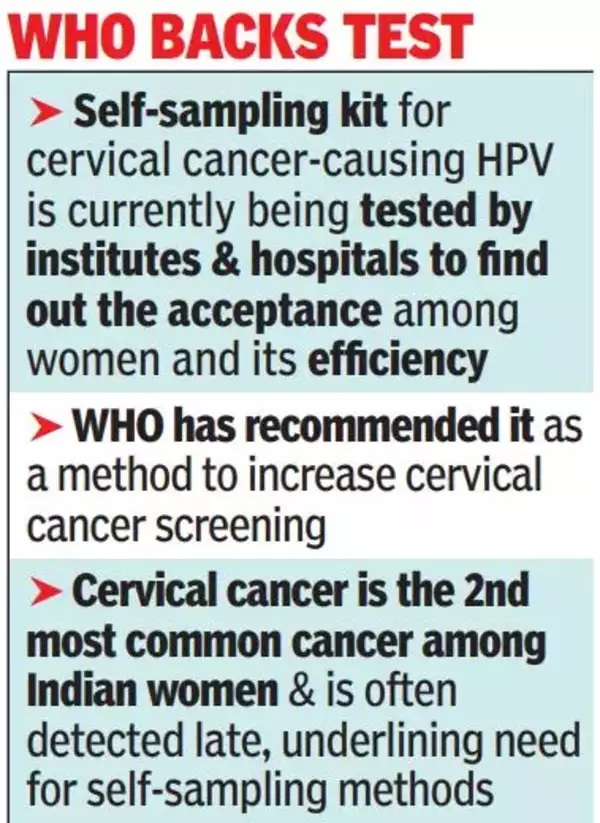The HPV self-sampling kit, similar in principle to the home-testing kits for the Covid-causing SARS-CoV-2 virus, is at the moment being tested by various institutes and hospitals in India to find out the acceptance among women and its efficiency.

The World Health Organisation has already recommended it as a method to increase cervical cancer screening that would help eliminate the disease. Cervical cancer is the second most common cancer among Indian women – accounting for 18% of all the cancer cases detected in 2020 – and is often detected late, underlining the need for self-sampling methods. The response to the self-sampling test, as gauged from three papers from Mumbai, Kolkata & Mysuru presented at the recently concluded World Cancer Congress in Geneva, Switzerland, showed the majority were comfortable with it.
Self-sampling: Acceptance rate was 99.2%
Instead of a healthcare worker or doctor taking the sample from inside her cervix and vagina, the woman can use a gentle brush to collect samples herself. “If a woman has an HPV infection, the virus can also be found in lower in the reproductive tract in the vagina, so there is no need to collect from the cervix,” said Dr Gaurav Mishra from the preventive oncology department of Tata Memorial Hospital at Parel, who is associated with the self-sampling study in Mumbai.
As per the Tata Memorial study submitted for the Geneva meet, 500 women in urban slums, another 500 in urban non-slum areas and 600 women from rural settings were asked to self-test after being educated about how to use the kit. “The acceptance rate of self-sampling was 99.2%, 97% and 98.8% and HPV positivity was 7%, 7.8% and 7.8% among the urban slum, urban non-slum and rural women respectively,” the study said. The difference in results between the samples collected by health personnel and self-sampling was negligible.
The research paper from Mysore found that 92% of the 345 women who self-collected vaginal samples preferred this method and would recommend it to their friends.






